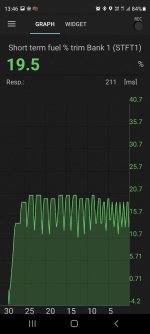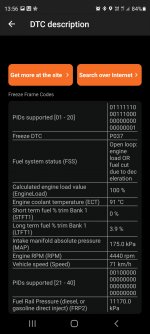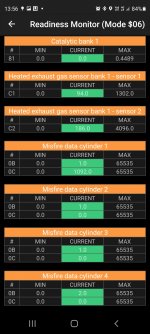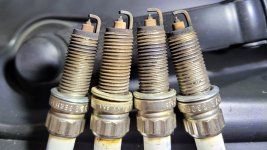Hi gentlemen and gentleladies
I am puzzled again with my Citroen DS3 1.6T with the infamous EPCDT engine and I am hopping the brains trust and the THP gurus will shed some light
The engine doesn't seem to run 100% right. While it seems to cruise OK, it does not like sudden throttle openings. It occasionally misfires on wide open throttle after a long downhill with the throttle closed. Shuddering and stuttering at that moment.
I did run some basic diagnostics and I found something a little strange. The short term fuel trims at 3,000 rpm and no load show +20% fuel being added. At idle, it sems to hover around 0.
Long term fuel sits at 4%. See files attached.
What do you think it is happening?
- Faulty PCV?
- Buggered O2 sensor?
- Carbon buildup?
Misfire count seems to go up in Cyl1 when going WOT right after a long downwill coasting - ocassionally setting the EML light on. Swapping coils and plugs makes no difference. Plugs seem healthy too.
I did a manual carbon clean myself with pick and solvents. It's not 100% clean but decent.
Thanks folks!
I am puzzled again with my Citroen DS3 1.6T with the infamous EPCDT engine and I am hopping the brains trust and the THP gurus will shed some light
The engine doesn't seem to run 100% right. While it seems to cruise OK, it does not like sudden throttle openings. It occasionally misfires on wide open throttle after a long downhill with the throttle closed. Shuddering and stuttering at that moment.
I did run some basic diagnostics and I found something a little strange. The short term fuel trims at 3,000 rpm and no load show +20% fuel being added. At idle, it sems to hover around 0.
Long term fuel sits at 4%. See files attached.
What do you think it is happening?
- Faulty PCV?
- Buggered O2 sensor?
- Carbon buildup?
Misfire count seems to go up in Cyl1 when going WOT right after a long downwill coasting - ocassionally setting the EML light on. Swapping coils and plugs makes no difference. Plugs seem healthy too.
I did a manual carbon clean myself with pick and solvents. It's not 100% clean but decent.
Thanks folks!
Attachments
Last edited:




